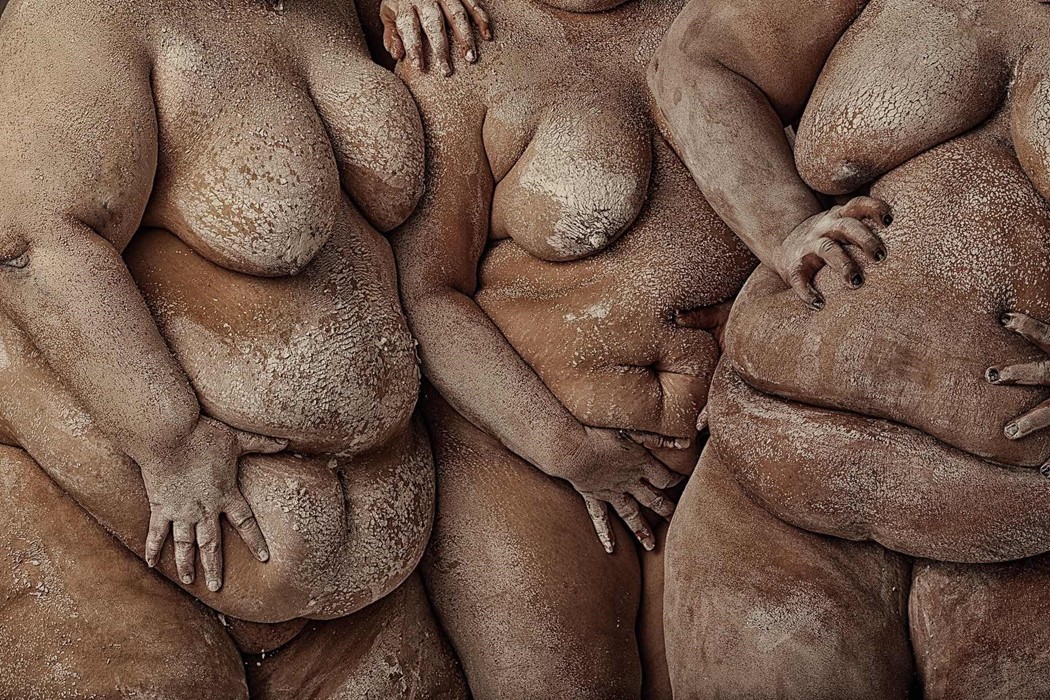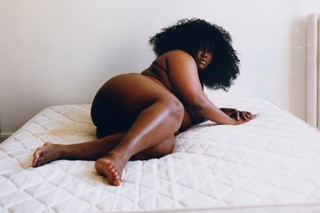As Nude prepares to open at Fotografiska New York, seven of the artists featured in the exhibition speak to AnOther about their approach to the nude
Humans are obsessed with the naked body. Centuries of art, decades of film, and today’s omnipresent digital media provide ample evidence of this collective fixation. And, while many instances of nudity are celebratory, it’s also a fact that this kind of imagery goes hand-in-hand with issues around objectification – particularly of women – harmful beauty standards, and a lack of representation of marginalised groups. Offering a fresh new perspective on the nude, a new exhibition opening at Fotografiska New York investigates the body through the lens of 30 female-identifying artists from around the world, each of who have photographed the body in beautiful, disruptive, and experimental ways.
Exploring ideas of the nude as both an “idealised form”, as well as more honest and personal artistic expressions of the subject, the exhibition’s 200 works celebrate a plethora of identities and perspectives on nakedness. Among the artists featured are Dana Scruggs, who has explored the Black male body; Japanese artist Momo Okabe, whose raw imagery documents trans and non-binary individuals; artist Luo Yang, who has spent her career capturing underground youth culture in China; and Lina Scheynius, who has turned the camera on herself.
“Unlike painting, photography is not a medium that has been ‘owned’ by men for centuries,” says co-curator Johan Vikner. “In art, we have mostly been presented with the same kind of nude through our modern western history. A consideration most often decided and depicted by men, for an audience of men. This collection of contemporary female artists using the nude body as their language, be it their own or others, for the sake of art, beauty, representation, self-expression, as a subject and object, is an example of what this new nude is and what it looks like.”
Here, seven of the artists featured in Nude talk us through their exhibited works and their individual approaches to photographing the body:
Arvida Byström
“I am showing a version of my Cherry Picking show which is a mix of still lifes and selfies. Still lifes were previously seen to be a more suitable art form for women because they didn’t require nude studies. Selfies are also an art form that is considered to be feminised and lowbrow. The show also features a photo of my friend Adam Pettersson’s bum and balls through Lazoschmidl underwear and with a cherry on top. It is a photo that I love but is very hard to post on the big online platforms, so I am very happy to be able to show it to a wide audience at Fotografiska.
”I am not sure I, as a woman, will change the perspective of the nude tremendously – walking into the show I think you will notice that the majority of nudes depicted are still female bodies. I find that interesting, that nudes often equal women. Why is that? Why don’t we turn the camera towards men now? But I sense that there is an internalised anxiety and questioning of the nude that one can see as a thread through the whole exhibition. Perhaps that is the difference.”

Luo Yang
“These pictures are moments with girls who have touched me greatly. Mao Er is a girl I met when travelling in Chengdu years ago. I was with her in her apartment [when I took her photo], she was smoking and calmy staring at the loud market downstairs, watching people coming and going on the street. Wang Yanyun has been my friend for many years. The picture of her was taken when she just got out of a marriage and became pregnant. It was a new stage of her life so I wanted to record that moment for her. Lastly, Mei Ling’s photo was taken in a hutong courtyard in Beijing. She possesses a very strong and fearless power. I try to present female power in a way that’s direct and pure: the authentic and primitive feminine state.”

Bettina Pittaluga
“Most of the images in this series are about celebration. To be asked to photograph a celebration of any kind – whether it’s celebrating your body, its transition, or shared love – is the most beautiful thing about my job, I think. To be given this extraordinary trust. For me, there is nothing more beautiful than the celebration of yourself and others.
“In my work, I approach nudity through physical intimacy. It can be revealed by being in someone’s personal space or bonding through physical contact – by ‘skinship’. What interests me in nudity, from a pictorial and emotional point of view, is the expression of the skin. It involves the other senses because it is impossible not to see, hear and smell people when you are close enough to touch them.”

Lina Scheynius
“All my works in the exhibition are from my ongoing diary series. I started it 15 years ago when I made the decision to document my life and share it with an audience. The images mean the world to me. They are personal and raw, and feature portraits of friends, myself and people close to me. Like pages from a diary.
“[When approaching the nude] the important thing for me is respect for my subject. To treat them with care and make sure it’s a collaboration that they also enjoyed. I try my best to pay attention to this. This is one of the reasons I like to work with friends the most because there is already an existing relationship there. I was a model when I was young and I often felt like an item without a voice, and this is not a way of making images that I support.”

Momo Okabe
“[My featured works] are the things I have seen. They are human experiences. I always only want to know the truth, and I find beauty there. These photographs are beautiful as a form of documentary, and they are my origins.
“I believe you must be female to truly capture the nude. This is because women can transcend desire and embrace the subject through a motherly, god-like view. I believe you can shoot anything if you are committed: so I shoot.”

Julia SH
“The exhibition features a few images from my Studio Practice series, which was made possible by my long-term collaborator and model Angelina Duplisea and two of her wonderful friends, who submitted to hours of being body painted by makeup artist Sara Tagaloa to become human sculptures. My models were then framed as works of art in a museum, in the hope that the viewer will suspend any judgments about whether they find the models sexually attractive or not, or whether their bodies are “socially acceptable.” The museum is often one of the only settings where we can encounter non-judgemental adult nudity, hence why I am thrilled to be exhibiting these pieces in an actual museum.
“My stance on nudity is very pragmatic. It’s possible that this is due to my cultural upbringing, which was devoid of religion or sexual shame. To me, photographing the nude has nothing to do with sexualisation of the flesh but rather how we carry ourselves in a state of undress. I struggle to think of an example where adult nudity is permissible outside of a medical and sexual context in western society. My goal is to neutralise the body by featuring culturally underrepresented body types in settings that suggest a different starting point for the dialogue about our bodily differences. Specifically, instead of questioning whether certain body types are ones we want to possess, or have sex with, I wish to create a fresh perspective, where we view these bodies simply as phenomena in the universe.“

Denisse Ariana Pérez
“The works portrayed in the Nude exhibition are all from my ongoing series Agua which explores the interaction of people and water. I believe that water can disarm even the most armed of facades – that becoming one with water allows us to connect to our true essence. The selection for this exhibition only focuses on my portrayal of men. With my work, I try to disarm and dismantle traditional notions of masculinity, facades of masculinity, especially of brown and Black men. Through my images I aim to showcase brown and Black men through a more sensitive lens – one that shows nuance and vulnerability, and which challenges the way they have typically been depicted throughout Western history.
“I don’t impose full nudity on my subjects – they need to choose it. They can show as much as they are willing to show. If a subject is able to confront their insecurities, and feel liberated in some way in that process, then I have succeeded as an artist. Stripping of one’s clothes is not the only step to ‘being naked’. I’m more interested in the mental and emotional stripping that accompanies that process. Nudity is vulnerability, and it should be treated with a caring, empathetic hand. Photography as a whole should be treated with the same hand in my opinion.”

Nude is on view at Fotografiska New York from 11 February – 1 May 2022.






